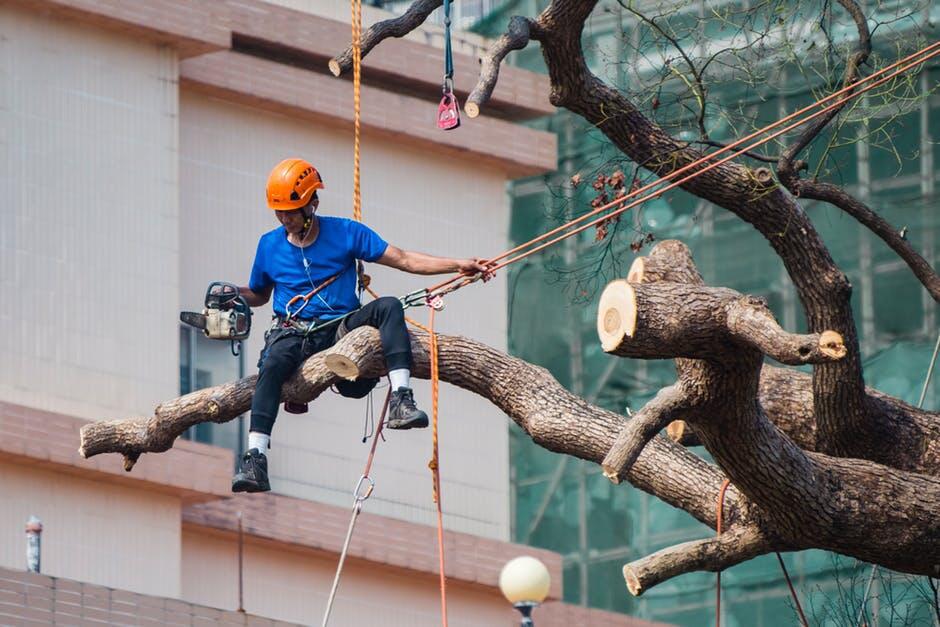Our yards are full of life, from the sturdy oak that shades the house to the delicate saplings that dance in the wind. But like all living things, trees can fall victim to stressors that impede their health and safety.
Recognizing when your arboreal friends need a check-up is crucial for maintaining a balanced and beautiful garden. Here are key signs that your precious trees might be trying to tell you something. Take notes for your next tree inspection!
Leaning Is Trending
If your tree is striking a pose with a noticeable lean, it’s more than just an arboreal fashion statement. It’s often a sign of structural weakness or root issues.
Trees typically grow tall and straight, so any deviation from this norm is worth investigating. A professional arborist can assess the degree of leanness and determine the cause.
It could be as simple as water or sun imbalance or as severe as soil erosion. This calls for prompt attention to prevent potential hazards.
Cavities and Cracks
Cavities and cracks in your trees are not just cosmetic concerns. They are glaring red flags signaling internal decay and structural instability.
These imperfections can arise from a variety of sources. This includes fungal infections, past injuries, or even improper pruning techniques. If left unchecked, these tree problems can lead to further deterioration, potentially compromising the tree’s integrity.
It’s vital to have a trained arborist evaluate the extent of the damage. In some cases, targeted treatments or strategic pruning can mitigate the risks. It helps to preserve the tree’s health and longevity.
However, in severe cases, removal may be the only safe option to protect your property and surrounding landscape. You might need emergency tree removal services if a sudden storm strikes, and your tree poses an immediate threat.
Root Rot Ain’t Cool
Roots are the foundation of any tree, quite literally. If you spot signs of root rot, it’s time to take action.
This condition occurs when soil-borne fungi attack a tree’s roots and disrupt its ability to absorb water and nutrients. The visible indications include stunted growth, yellowing leaves, and wilting foliage.
If these tree risks manifest in your yard, it’s crucial to have an expert diagnose and treat the problem. They can help you address the underlying issues such as poor drainage or soil compaction. This will not only save your tree but also improve the overall health of your garden.
It’s Fungal Among Us
Fungi are a vital part of nature. However, when they invade your trees, it can have dire consequences. Signs of fungal infections include discolored or distorted leaves, black spots or streaks on branches or trunks, and powdery growth on the tree’s surface.
These symptoms may indicate various diseases like anthracnose, rust, and blight, among others. Each requires specific treatments and management strategies.
An arborist can identify the type of infection and recommend the best tree maintenance strategies to control its spread. Moreover, by regularly monitoring your trees’ health, you can catch these infections early on and prevent tree damage.
Limb Loss Is Not a Laughing Matter
Tree limbs can break or fall due to various reasons, such as age, disease, or extreme weather. If you notice any dead or hanging branches on your tree, it’s vital to take action promptly.
These weakened branches can pose a risk to people and property below, especially during windstorms or heavy rainfall. A professional arborist can assess the situation and prune or remove the affected branches safely.
Regular pruning is also essential to prevent these potential hazards and maintain your tree’s structural integrity. It promotes healthy growth by removing weak, diseased, or dead limbs and improving air circulation within the canopy.
Leaf It Alone?
Pay attention to your tree’s leaves, as they can serve as a barometer for its overall health.
For instance, if you notice sparse foliage or premature leaf drop, it could indicate stress factors such as drought, nutrient deficiency, or insect infestation. Discolored or distorted leaves can also signal diseases or pest problems.
Early detection and treatment of these issues can save your tree from significant damage or death. Consult with a professional arborist to develop a customized plant healthcare plan for your trees.
Insect Invaders
Many insects are a natural part of the ecosystem and pose no significant threat to your tree structures. However, some species can wreak havoc on your tree’s health and vitality.
These pests may cause visible damage, such as defoliation or dieback, or they may remain hidden within the tree. Regular monitoring of your trees is crucial for detecting these invaders early on and implementing appropriate pest management techniques.
A certified arborist can help identify the insect species and suggest safe and effective solutions to mitigate their impact on your trees.
Choked or Compacted Roots
Tree roots require adequate space and oxygen to thrive. When the soil becomes too compacted or crowded, it suffocates the roots, impeding their growth and function.
Signs of root crowding include stunted growth, yellowing leaves, and wilting foliage. If left unaddressed, this can lead to tree decline and even death.
An arborist can assess the tree’s root system and recommend solutions to alleviate compaction or improve drainage. This may involve root pruning, air excavation, or soil aeration techniques.
Stress Lines in the Bark
The tree’s bark serves as a protective layer, shielding it from external elements and pathogens. However, if you notice vertical or horizontal cracks in the bark or excessive peeling, it could indicate underlying issues.
These include diseases, insect infestations, and environmental stressors like drought or temperature fluctuations. An arborist can help identify the cause and develop a treatment plan to restore your tree’s bark and overall health.
Unexpected Growth at the Base
Pay attention to any unusual growths or formations at the base of your tree, such as mushrooms or excessive sprouting. These could indicate root rot, soil compaction, or other serious problems.
It’s best to have an expert evaluate these issues. They can recommend appropriate management strategies to prevent further damage.
A Tree Inspection Is Always in Season
Regular tree inspections are critical for maintaining the health and safety of your trees and property. It’s best to schedule a tree inspection at least once a year, preferably before the growing season begins.
So keep a keen eye on your trees and be attentive to any changes or signs of distress. And when in doubt, don’t hesitate to consult with a certified arborist for professional advice and assistance. Your trees will thank you for it!
Did you find this article helpful? If so, check out the rest of our site for more.






